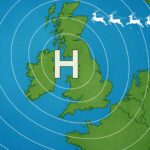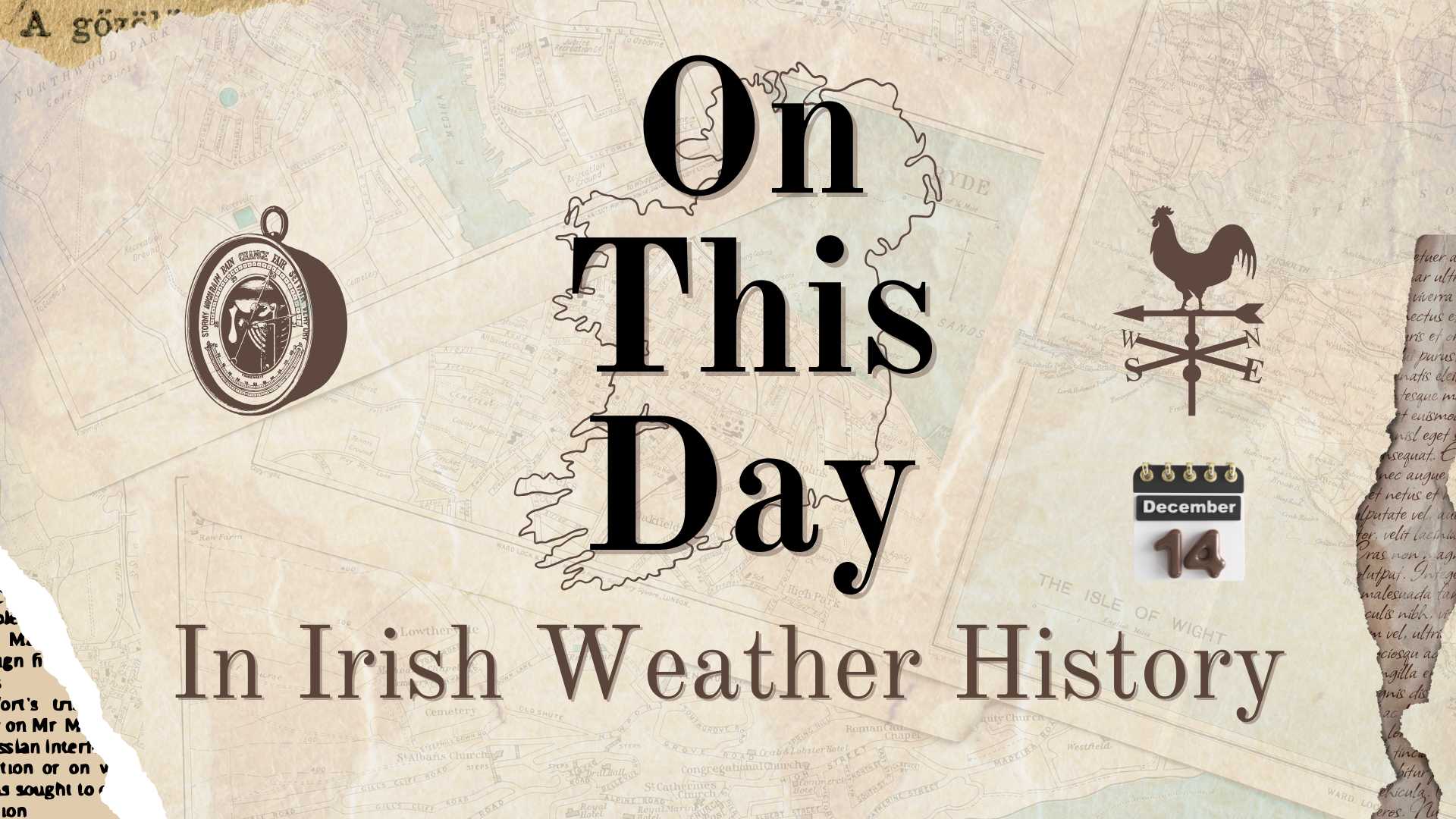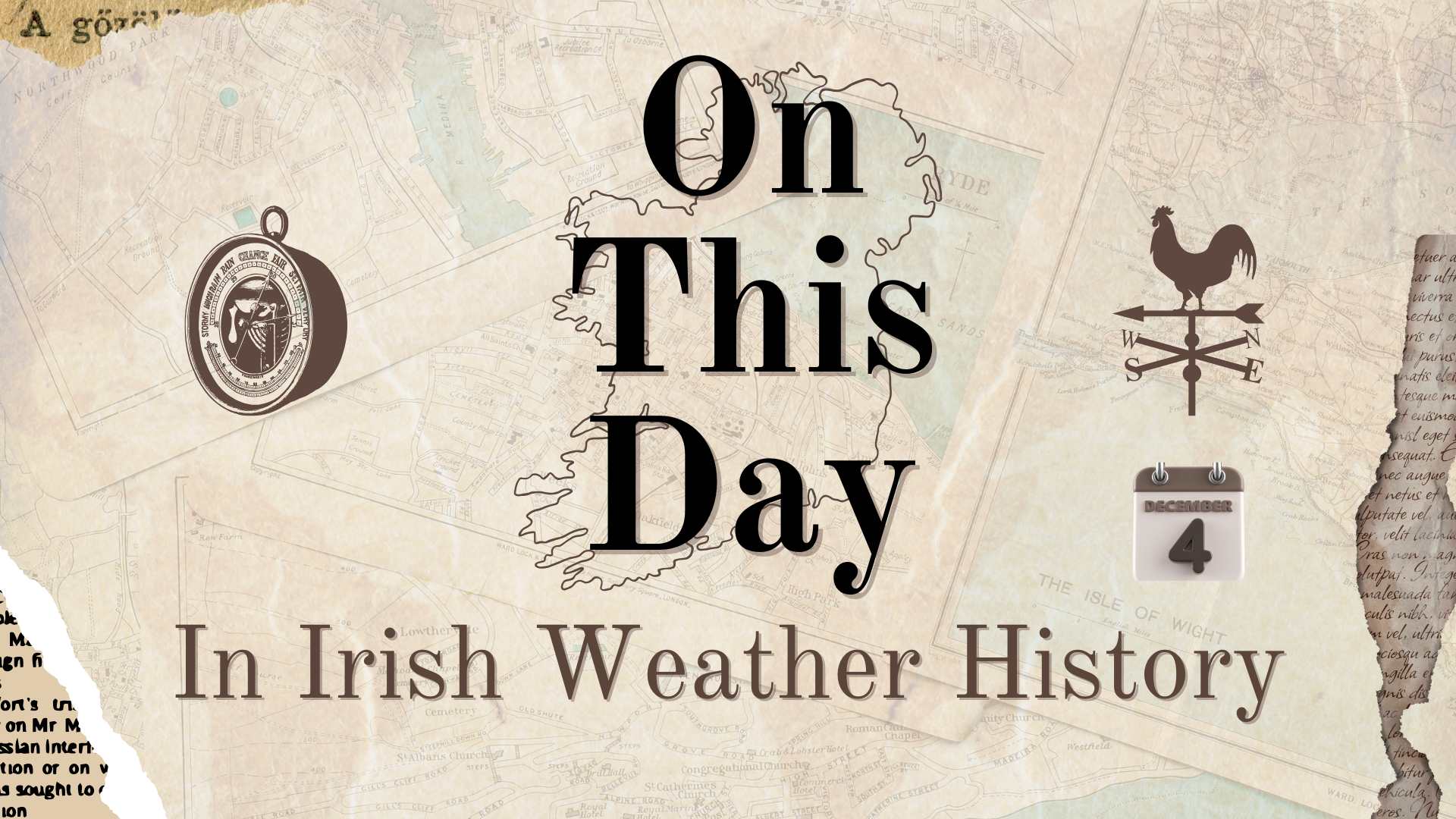
Hurricane Charley: Ireland’s 1986 Deluge
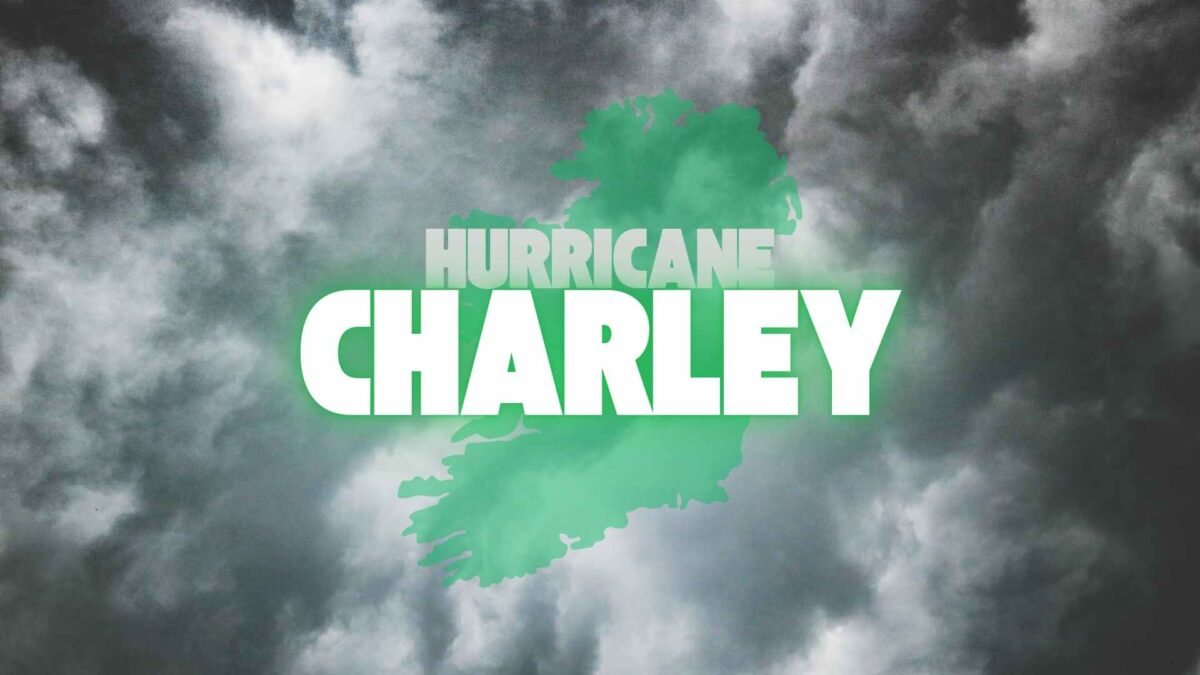
On August 25, 1986, Ireland faced one of its most severe weather events in recent history when the remnants of Hurricane Charley swept across the country.
Originally a tropical storm in the United States, Charley became an extratropical cyclone as it crossed the Atlantic, bringing unprecedented rainfall and widespread flooding.
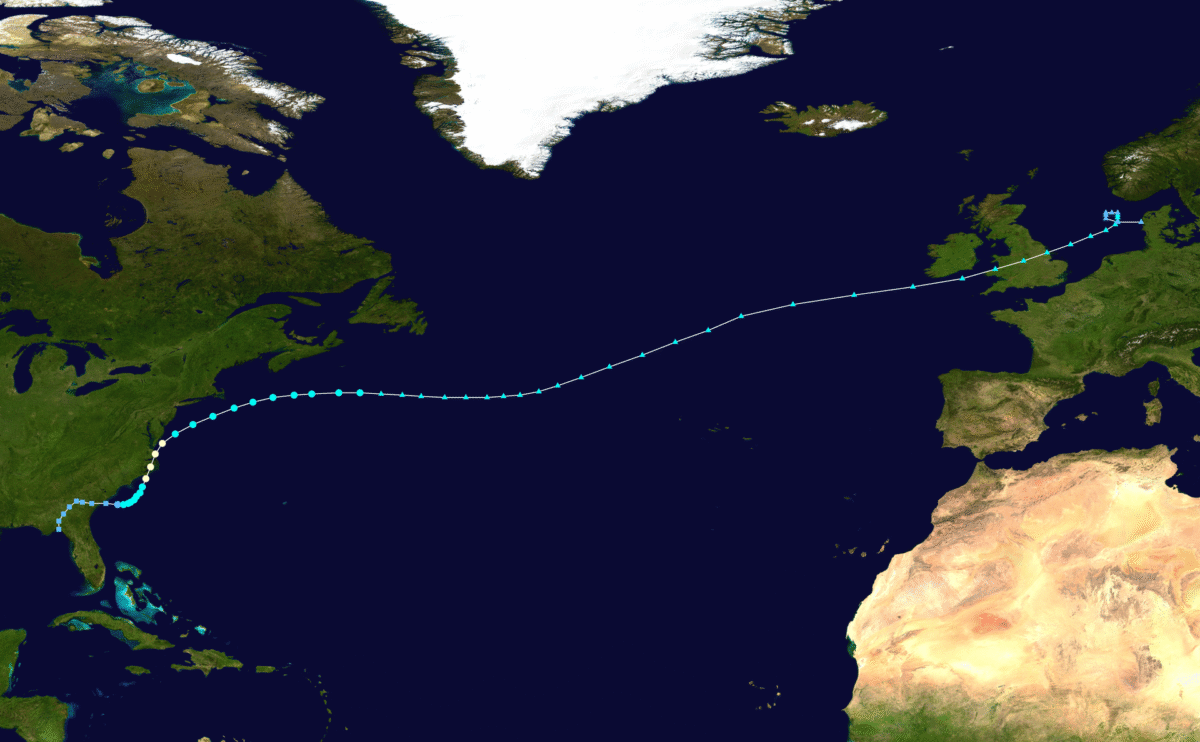
Torrential Rainfall and Record Floods
The storm’s impact was most severe along the eastern coast, particularly in Dublin and Wicklow. At Kippure, County Wicklow, 280 millimetres of rain fell in just 24 hours, setting a national record for daily rainfall. Rivers including the Dodder and Dargle overflowed, causing extensive flooding.
In Dublin, 451 buildings were inundated, with some properties submerged under nearly 2.4 metres (8 feet) of water. Bray in County Wicklow was particularly hard hit. The River Dargle breached its banks, forcing over 1,000 residents to evacuate. Floodwaters damaged more than 500 homes and felled numerous trees, leaving a trail of destruction.
Loss of Life and Emergency Response
The storm claimed at least five lives in Ireland. Four fatalities were drownings in flooded rivers, and one person died from a heart attack during evacuation efforts. Emergency services deployed boats to rescue stranded residents. The Irish government responded swiftly, allocating £6.45 million (approximately $8.65 million USD) to repair damaged infrastructure, including roads and bridges.
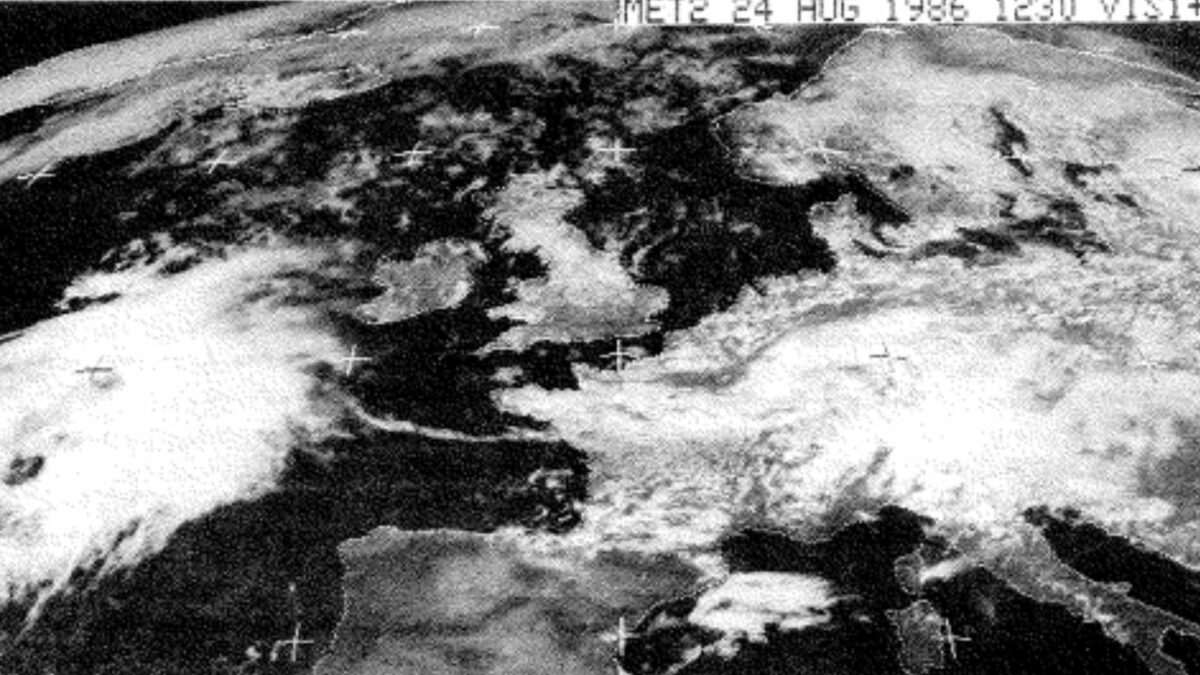
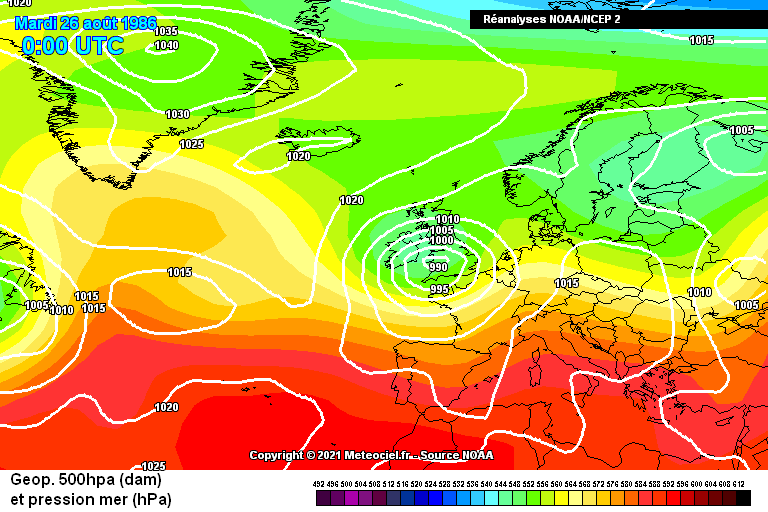
Agricultural and Environmental Impact
Hurricane Charley struck less than three weeks after heavy flooding in the south and southwest caused by a deep low-pressure system. Farmers in Tipperary and Limerick had reported severe weather damage to crops and called on the Minister for Agriculture to visit Munster. The capital would face flooding just 24 hours later.
The storm caused significant river erosion, particularly along the Cloghoge River in County Wicklow, and deposited coarse materials on floodplains. Agricultural losses were severe, with cereal production in County Waterford reduced by an estimated 50 per cent. Destruction of feed, hay, and silage forced many farmers to house livestock earlier than usual, affecting milk supply and incomes across southern Ireland.
Archival Footage
RTÉ Archives holds a collection of news footage documenting the devastation caused by Hurricane Charley, offering a visual record of one of Ireland’s most memorable storms.
Hurricane Charley and Forecaster Michael Fish
Hurricane Charley is often linked to Michael Fish and a famously inaccurate weather forecast he gave on the BBC. During a broadcast, Fish reassured viewers about an approaching storm, saying: “Earlier on today, apparently, a woman rang the BBC and said she heard there was a hurricane on the way. Well, if you’re watching, don’t worry, there isn’t.” The forecast, however, was given 13 months after Charley, in October 1987, and referred to a different storm system.
The incident sparked the term “the Michael Fish effect,” describing how British weather forecasters have since tended to predict worst-case scenarios to avoid being caught off guard.
Ireland’s Brush with Ex-Hurricanes over the Past 100 Years
Charley is one of many “ex-hurricanes” to affect Ireland’s weather. Ex-hurricanes and post-tropical cyclones frequently pass near or over the country, particularly in late summer and autumn when the hurricane season overlaps with the Atlantic storm season. Once these systems transition into extratropical cyclones, they are not always classified as ex-hurricanes in official records.
Ireland is typically significantly affected by one or two such systems per decade, although many more remnants pass by with little impact. Most of these events occur between late August and October.
While not an exhaustive list, the following are the major, well-documented events:
20th Century
- September 1938 – The Great New England Hurricane remnants: After devastating the US East Coast, its remnants brought unsettled weather to Ireland.
- September 1961 – Hurricane Debbie: The strongest ex-hurricane on record to strike Ireland. Transitioned into an extratropical cyclone but retained hurricane-force winds. Debbie claimed 11 lives in Ireland and 60 in total along its path.
- August 1986 – Hurricane Charley: Produced extreme rainfall. On August 25th, Kippure, Dublin, recorded its heaviest daily rainfall on record with 200 mm.
21st Century
- September 2006 – Hurricane Gordon: Downgraded but still brought winds over 70 knots to the south coast.
- August 2009 – Hurricane Bill: Passed west of Ireland, generating high seas and strong winds.
- September 2011 – Hurricane Katia remnants: Brought widespread power cuts and gusts up to 130 km/h in Donegal.
- August 2017 – Hurricane Gert remnants: Triggered flooding and landslides in Donegal.
- October 2017 – Hurricane Ophelia: One of the most severe storms to ever hit Ireland. On October 16th, three people were killed, with widespread damage and record-breaking winds reported.
- August 2018 – Hurricane Ernesto remnants: Delivered heavy rain and gusty winds.
- October 2020 – Hurricane Lorenzo: Arrived as an ex-hurricane, producing strong winds and high seas, though weaker than initially feared.
- September 2021 – Hurricane Larry remnants: Passed to the north but contributed to unsettled conditions.
- August 2025 – Hurricane Erin remnants: Expected to anchor to the northwest of Ireland, bringing cooler and unsettled weather.
